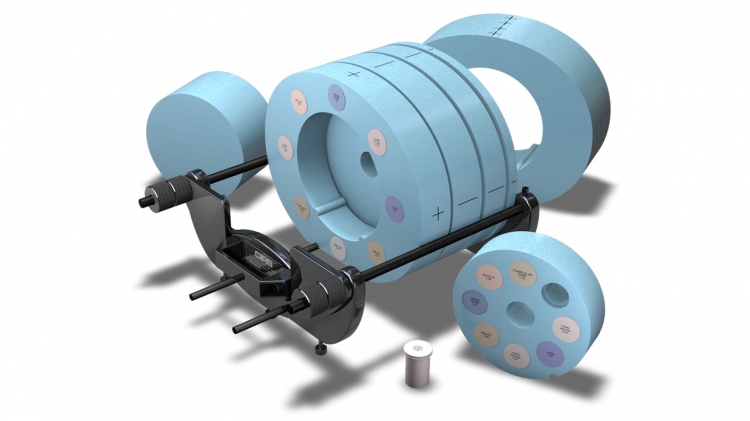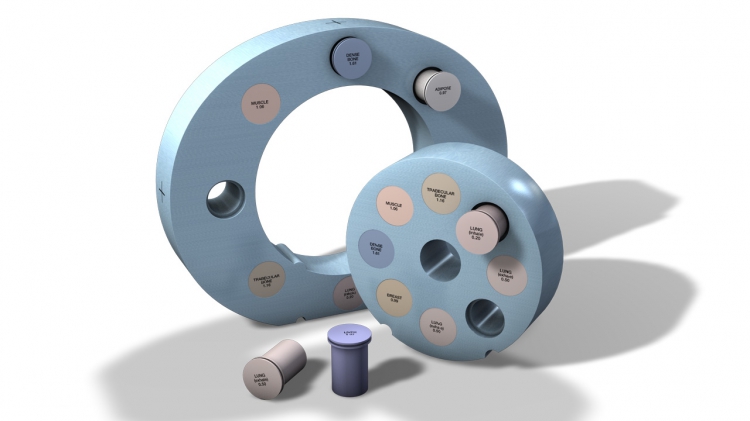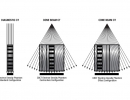CBCT Electron Density Phantom Model 062MA
Increase HU Value Confidence for Adaptive RT
The Cone Beam (CBCT) Electron Density Phantom is an extended version of the CIRS Model 062M Electron Density Phantom and specifically designed for Cone Beam CT Imaging systems. Preliminary data shows that there may be differences between the HU readings for Diagnostic CT and Cone Beam CT. The geometry of the Cone Beam CT requires additional material and suggests that off central axis measurements should be taken.
The phantom was designed in collaboration with Dr. Peter H. Cossmann, PhD to provide a reliable tool for CT number to electron density calibration in volumetric imaging. Reliable CT calibration curves help enable treatment plan adaptation directly from Cone Beam CT data. Additionally, the phantom can accommodate any ion chamber for dose measurements and validation of heterogeneity correction based on the corrected CT calibration curve.
The Model 062MA CBCT Electron Density Phantom’s size covers geometries for imagers with dimensions of up to 40 cm x 40 cm. It is made of Plastic Water® and contains the same set of tissue equivalent electron density inserts as the standard Model 062. Additional interchangeable slabs allow for repositioning of the electron density section with an increment of 2.5 cm.
The 062MA is just one of three configurations available as a part of the Cone Beam CT Electron Density & Image Quality Phantom System.
Features:
- Can be used for multi-slice CT and Cone Beam CT
- Can be configured for central axis and off-set measurements
- Manufactured from durable epoxy
- Tissue equivalent inserts can be positioned at 17 different locations
- Special marker inserts enable quick assessment of distance registration
- All materials accurately simulate indicated tissue within CT and Cone beam CT energy rangeNOTE: This product or an optional accessory of this product requires a CIRS dosimetry cavity code before an order can be placed. Please refer to the Dosimetry Cavity Codes document to identify the CIRS code for the probe you intend to use with this product.







